PLEN heating system: specifics of infrared film heating
Our life never stops. Technical developments, considered yesterday as new products, are already outdated today. Heating systems are no exception. Constructions with a liquid coolant, once considered an uncontested option, have long failed to satisfy the demanding consumer.
They are being replaced by many promising developments. One of them is the PLEN heating system, which has proved to be an effective way of heating a house. But what is its peculiarity and is it able to justify the money spent on arranging film heating?
Let's deal with these issues together - in our article we examined the system design, its pros and cons. We also paid attention to the issue of the benefits and harms of infrared heating and separately dwelled on the efficiency of the PLEN in domestic conditions.
The content of the article:
What is radiant heating?
In nature, there are only three methods of heat transfer: direct heat transfer, convection, and infrared radiation. Widespread in our country, and throughout the world, convective heating for its work uses the second method.
This means that the heating of the room occurs due to the movement and mixing of cold and hot air. The latter is heated by radiators.

They can be heated with a heat transfer fluid, electricity, air or any other method. The disadvantages of convective heating are significant temperature differences in the room, air drying, the inability to ventilate the room without heat loss.
But the most important thing is that it is not effective enough. The principle of convection involves some heat loss.
It must be recognized that the convective system copes well enough with heating buildings with insufficient thermal insulation, which is why it has become so widespread. Radiant heating works differently.
According to the laws of physics, all bodies that have a temperature above absolute zero on the Kelvin scale or -273 ° Celsius emit infrared rays. The higher the temperature of the object, the higher the intensity of its radiation.
Transparent air is completely permeable to infrared waves. They easily overcome it and are absorbed only by opaque bodies. It can be walls, ceiling, floor or furniture.
When infrared rays are absorbed, objects heat up and, in turn, begin to generate more intense infrared waves. That is how the operation of an infrared heater causes air heating in a heated room.
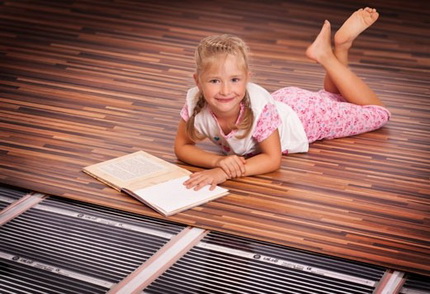
Radiant heat very quickly warms up a room and for a long time keeps the desired temperature in it. In addition, it is better perceived by living organisms. The explanation for this is quite simple. The human body, like any other, also generates infrared waves.
Being in a room heated by a convective method, a person experiences a certain discomfort from the fact that only radiators turn out to be heated.
Cool, or even cold, walls, floors, and other large objects begin to “draw” infrared heat from the human body, which leads to discomfort. In a room with radiant heating, everything is different. Heated objects themselves radiate heat and feed them a person, so in such a room is always comfortable.
All things being equal, and even with a temperature difference in favor of a room with convective heating, it will be more comfortable for a person in a room with radiant heating.
In more detail popular types of infrared heaters among users, we reviewed here.
PLEN system device
The ideal source of radiant heating is a massive Russian stove. However, it can not be installed in all rooms. Engineers have developed several types of different infrared heaters.
Perhaps the most economical and effective option is the PLEN system, which uses special film heaters for heating. It was developed by Chelyabinsk scientists relatively recently.
The name of the system is deciphered as "film radiant electric heater." It is this device that underlies the system. Its construction is extremely simple. PLEN is a resistive radiating element laid on a foil substrate, laminated in a strong film.
The total thickness of such a heater is about 1.5 mm. The length and width may be different, it depends on the manufacturer.
A multilayer resistor circuit is used as a resistive element in the device. At the moment the heater is turned on, the resistor contacts are supplied with the power necessary to heat them up. The device warms up to 45-40 ° C.
This is quite enough for the resistors to emit long-wave infrared radiation. It scatters the room extremely uniformly and is gradually absorbed by all opaque objects.
They, in turn, during the absorption of infrared waves heat up and begin to gradually transfer heat to the air. Practice shows that in order for the temperature in the room to increase by ten degrees, it will take 1-1.5 hours.
The insulation of the room and the correct installation of the film heater are of importance. If during installation of the latter, a substrate reflecting the infrared waves did not fit under it, it will work less efficiently.
After the room temperature has reached the set value, the thermal relay is activated, turning off the heater. After the room cools down a bit, it will work again and start the heater in operation.
Thus, the PLEN does not work continuously, but only for periods, which makes it very economical. At the same time, the quality of heating does not suffer at all: the set temperature is maintained in the room.
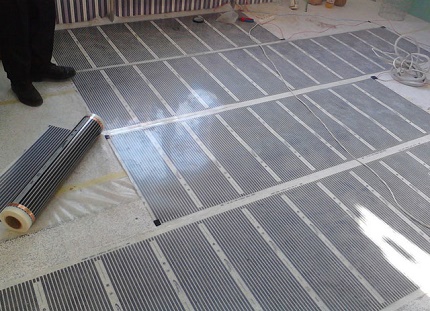
Devices are available in the form of strips, the length of which is determined by the manufacturer. Most often, it varies within 5-6 meters.
For ease of installation inside the strip, the equipment is divided into fragments that can be cut off without loss of operability of the entire system. The width of the stripes also varies. Most often you can find models with a width of 0.5 or 1 meter.
One of the popular film systems is Zebra brand heating. We recommend that you familiarize yourself with its characteristics and the principle of operation in more detail.
Methods for installing film heaters
Theoretically, infrared film-type heaters can be mounted on any flat surface, oriented almost any way. In practice, they are most often installed on the floor or on the ceiling.
Wall mounting is possible, but this is the most inefficient option. This is explained by the fact that the heated air will rise strictly up. Thus, the scope of the heater will be significantly limited.
For this reason, it is not practical to use the wall-mounted version for heating a room, but as an additional source of heat, it is quite suitable.
Actually, the same models of film heaters can be used for laying on the ceiling or on the floor. Therefore, we consider in more detail all the nuances of their use in one way or another.
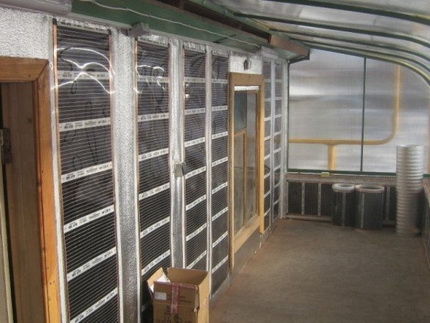
Option # 1 - Ceiling Heating Systems
Placed on the ceiling film heaters operate as follows.When the system is activated, it begins to emit infrared waves that are directed strictly down. The radiation moves toward the floor and is absorbed by it for the most part.
The remaining waves are delayed by furniture and other large items. As a result, all of them, including the floor, begin to accumulate, and then give off heat.
In full accordance with the laws of physics, heated air begins to rise. The colder air masses sink lower and warm up.
Thus, it turns out that the maximum temperature in the room will be at floor level. At a height of 1.5-1.8 m, it will be already 1-2 ° C lower. Doctors consider this temperature distribution optimal for human health and well-being.
It should be remembered that heating is carried out as evenly as possible. Another advantage: to mask infrared heating PLEN on the ceiling, you can use almost any available coating.
An exception here will be only stretch ceilings, both fabric and film. During operation, the film heats up, and since it will be located close enough to the ceiling panel, the latter may be deformed.
However, if you really want to combine the stretch ceiling and the ESP, home masters recommend installing additional protection from the layer of drywall. It will take on excess heat, and the stretched fabric will remain unchanged.
Another advantage of installing film heaters on the ceiling is the low risk of accidental damage.
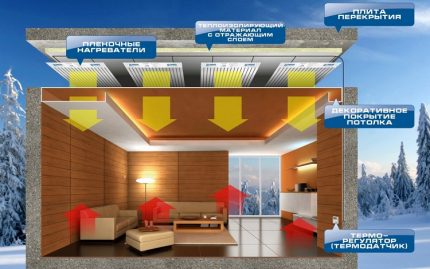
True, for apartment buildings this is not so. There is always a risk of leakage from neighbors from above, in which the system will inevitably fail. The disadvantages of the ceiling system are usually complex installation.
However, this is not true. Purely technically, it is no different from the floor or wall version of the installation. Admittedly, it is only more inconvenient.
Another minus is the effect of infrared radiation on household appliances. It is impossible to say with certainty that it will lead to a quick failure of devices, but there is such an opportunity. The amount of energy required to heat a room determines its height.
Experts do not recommend mounting the film system on the ceiling of a room with a height of more than 3.5 m.Since in this case the heating costs will be too high.
Option # 2 - floor placement of heaters
The film system is placed under the floor covering, which in this case can be almost anything. After turning on the heater, it quickly warms up and begins to emit infrared waves.
They rise up to the floor plane and are absorbed by the floor covering, which heats up and, in turn, begins to transfer heat to the air. Warm streams move upward, replaced by colder ones.
As a result, the room warms up quickly enough. Despite the difference in the location of the film heaters, the temperature distribution of the ceiling and floor circuits is approximately the same.
The highest temperature will be at the floor surface, slightly lower - at the level of the head. By the uniformity of heat distribution, both systems are also approximately the same. The main advantage of the floor version of the placement of heaters can be considered the lack of direct infrared exposure to household appliances and furniture.
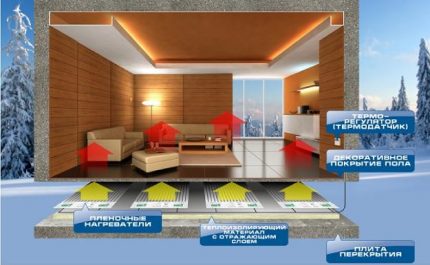
There are some features of mounting the film under the floor covering. As already mentioned, it can be anything. Moreover, heaters can be laid directly in the screed. Perhaps this is one of the best options, since the film is quite vulnerable and requires careful treatment.
If the coating laid on top of the PLEN is not durable, the system may be damaged by sharp objects, bulky furniture, etc.
Therefore, it is strongly recommended that an additional protective layer for the film be placed under thin coatings. Another feature is that the film IR heater can overheat if you install large furniture or heavy household appliances on top of it.
For this reason, it is better not to lay the film under such objects, leaving the area under the bulky items empty.
On our site there are detailed instructions for laying a warm film floor under various types of coatings and recommendations for selection and installation.
We suggest you familiarize yourself with them:
- How to make an infrared warm floor with your own hands: installation and connection of a film floor
- Laminate underfloor heating: installation and installation of a film infrared system
- How to make a film underfloor heating under linoleum: instructions for laying an infrared heating system
- Infrared film for underfloor heating: types of films, how it works, laying rules
- How to make a warm floor on the balcony and loggia: the choice of heating system + installation instructions
Advantages and disadvantages of the PLEN system
Everyone who would like to install a PLEN in their home is interested in learning about the advantages and disadvantages of the system.
Let's start with the benefits of installing it:
- Profitability. Compared to other types of electricity-powered heating, electricity costs are on average one third less. Maintenance costs are not required.
- Reliability and durability. The conductors sealed in a film can serve indefinitely. Moving and wearing parts in the structure are absent.
- Compact placement. Film heaters can be installed under any coating. They do not occupy a large amount of free space.
- System automation. This makes it possible to regulate the temperature in heated rooms and save energy.
- Universality. Failure of one of the fragments of the PLEN does not disable the entire heating coating.
- Favorable effect on the microclimate. During the operation of the system, the amount of oxygen and humidity in the room do not change. Heat is distributed optimally for humans.
In addition, you need to know that the PLEN works absolutely silently, without convection flows from air and dust. The system efficiency reaches almost 100%, there are no heat losses. The life of the equipment is estimated in decades.
Most manufacturers provide a 25-year warranty, emphasizing that the system's resource is at least 50 years of service. Throughout the entire life of the film heaters do not require maintenance.
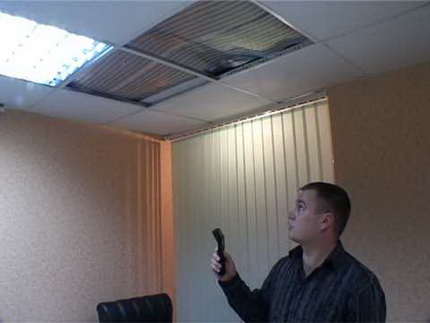
The system also has disadvantages. First of all, for its installation, sufficient electrical power and fully serviceable electrical wiring will be required. Which is not always possible, especially when it comes to old houses.
In this case, most likely, you will need to lay a new posting, and this is an additional cost. When the voltage drops in the network, the amount of heat generated by the film heater decreases.
True, this will not affect the temperature in the room, since the duration of the equipment will automatically increase. But it will affect electricity bills.
Sometimes film heaters are fixed to the ceiling or walls without any additional decoration. It is not right. The foil on which the resistive elements are fixed has a high reflectivity.
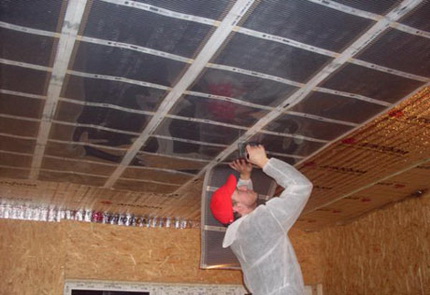
This causes visual discomfort, and simply not aesthetically pleasing. Therefore, it is advisable to cover the PLEN with any finish. In this case, you need to know that wallpapering, for example, on top of a film heater does not work.
It also can not be painted or putty. It is best to use any decorative coating that will need to be installed above the equipment.
The benefits or harms of infrared radiation
Most of those who think about installing infrared equipment in their home have a question about the safety of such a system.
To begin with, we will deal with what is infrared radiation. These are electromagnetic waves of a certain length. Their natural source is the Sun, which emits a large number of waves of various spectra. The longest of them belong to the so-called red, because the human eye sees them as red.
However, scientists have proved that there are also infrared waves, the length of which is somewhat longer. They belong to the waves of the spectrum invisible to man. They get on the skin and feel like heat exposure. But not all infrared radiation is the same.
Physicists distinguish three groups of such waves:
- Shortradiated by bodies with temperatures above 800 ° C.
- Medium. They are emitted by objects heated to 600 ° C.
- Long. Radiated by bodies with temperatures up to 300 ° C.
Depending on the wavelength, infrared radiation affects living organisms in different ways. Short waves penetrate deep into the human body and are able to warm up the internal organs.
On areas of the skin that have been exposed to short infrared waves, redness, blisters and even burns are formed. Waves of medium length have a milder effect, but are still undesirable for the body.
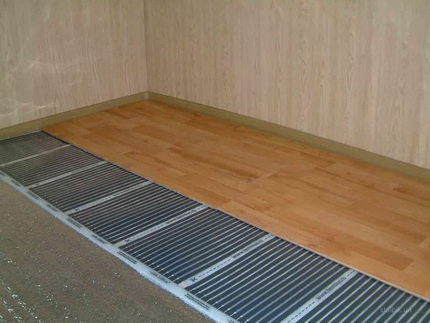
Long-wave infrared radiation is perceived by a person as pleasant warmth. It penetrates the upper layers of the skin and gently heats the moisture in them. That is why all living organisms love to bask in the sun so much.
Long-wave infrared radiation not only warms, but also activates the immune system, triggers the recovery and regeneration mechanisms of many systems and organs.
Given that the film equipment heats up to 45-50C, you can be sure that it emits long infrared waves. In the operating mode of maintaining the set temperature, the system works on average from 6 to 10 minutes per hour.
Thus, it has a short-term effect on a person. Safety PLEN is confirmed by many certificates. It is recommended for installation in medical and child care facilities.
Detailed information on the dangers of infrared heaters is discussed in our other article.
Effective film heating
The manufacturer declares that its products will work economically and efficiently. However, one must understand that this is true only for certain conditions.
If, for example, the building is not insulated, it is at least pointless to wait for the efficient operation of the PLEN film heating system. What requirements must be observed to get the most out of infrared equipment?
One of the main ones is thorough thermal insulation of walls, doors and windows in the building. If everything is clear with the latter, then there are some nuances regarding the thermal insulation of walls.
Wall insulation should be done outside. For this, various materials can be used: thermal insulation followed by plastering, sandwich panels, etc. To get acquainted with the types of insulation for the walls of the house outside, go this link.
If you insulate the walls from the inside, infrared heating will be useless.

Walls covered with insulating material will not accumulate and give off heat, since the insulator will prevent this. To equip an effective heating system, it is not necessary to completely cover the floor or ceiling with infrared film.
If it is assumed that such heating will be basic, it is enough to cover 70-80% of the area of the ceiling or floor surface.
For arrangement of additional heating it will be quite enough to cover 30-40% of the area. It is important to choose the correct mounting height for the thermostat. For the ceiling mounting option of the film, it should be at a height of about 1.7 m from the floor level.
For floor installation, it is raised 10-15 cm above the floor. If you make a mistake with the height of the fixture, the system will not work correctly.
Another important point is providing sufficient current power for the full functioning of the system. This must be done, otherwise the profitability of the plan will decrease significantly. To solve the problem, it will be enough to put a special load distribution unit.
The device allows you to turn on alternately different circuits of the heating system, thereby increasing the power supplied to each of them.
Installation of the film heater should only be carried out on a special substrate. It has reflective properties and does not allow the base on which the film is laid to absorb infrared radiation.
It is redirected in the opposite direction, which ensures the most efficient operation of the equipment. Without such a substrate, part of the infrared waves is absorbed by the base, which leads to unjustified energy losses.
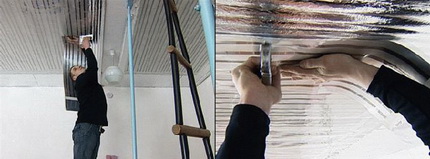
Another important point is the height of the heated room, if the system is fixed on the ceiling. Standard models of film emitters are designed for the infrared wave to cover a distance of not more than 3.5 m.
If it is larger, the radiation does not reach the floor. And, accordingly, the system will not work correctly.
Thus, if the room has high ceilings, you need to choose the floor mounting option or look for more powerful non-standard models of film heaters.
Conclusions and useful video on the topic
Main characteristics of the PLEN system:
How to install a plan under a suspended ceiling:
How to mount the system under GKL:
The PLEN system is a practical and highly effective way to heat your house or apartment. Perhaps film heating is still unusual, but it is undoubtedly the future.
The use of infrared films will make it possible to obtain very easy to install, safe, efficient and economical heating. And at the same time significantly save on the operation and maintenance of the system.
Have you realized the PLEN heating of the loggia or attic? Share your impressions of the result - how much the effect met your expectations?
Or are you just considering the possibility of installing this system and after studying the material we have proposed, you have a number of questions? Feel free to ask them in the comments to this article and we will try to help you.

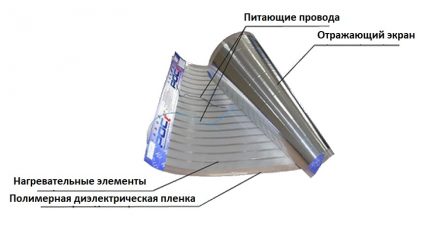
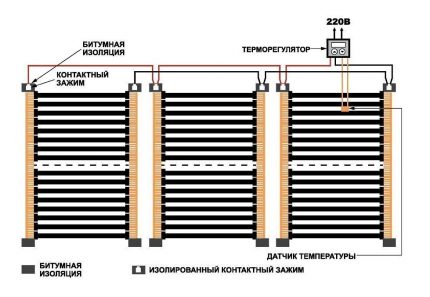
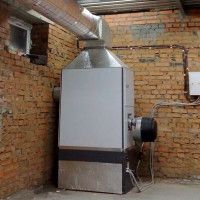 Gas heat generators for air heating: types and specifics of gas equipment
Gas heat generators for air heating: types and specifics of gas equipment 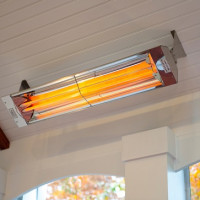 Infrared heating of a private house: an overview of modern infrared heating systems
Infrared heating of a private house: an overview of modern infrared heating systems 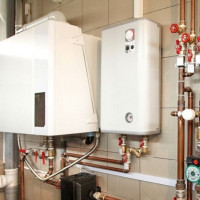 Heating from an electric boiler: options for organizing heating based on an electric boiler
Heating from an electric boiler: options for organizing heating based on an electric boiler 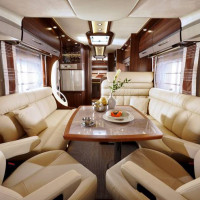 Heating systems in caravans: heater options for a comfortable temperature in the camper
Heating systems in caravans: heater options for a comfortable temperature in the camper  Expansion tank for open heating: device, purpose, main types + tips for calculating the tank
Expansion tank for open heating: device, purpose, main types + tips for calculating the tank 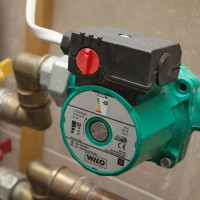 Connection diagrams of the heating pump: installation options and step-by-step instruction
Connection diagrams of the heating pump: installation options and step-by-step instruction  How much does it cost to connect gas to a private house: the price of organizing gas supply
How much does it cost to connect gas to a private house: the price of organizing gas supply  The best washing machines with dryer: model rating and customer tips
The best washing machines with dryer: model rating and customer tips  What is the color temperature of light and the nuances of choosing the temperature of the lamps to suit your needs
What is the color temperature of light and the nuances of choosing the temperature of the lamps to suit your needs  Replacement of a geyser in an apartment: replacement paperwork + basic norms and requirements
Replacement of a geyser in an apartment: replacement paperwork + basic norms and requirements
As a person using such a heating system, I want to add a few pros and cons on my own. Of the positive aspects, it is worth mentioning the complete absence of combustion products and convection flows with this type of heating. No need to build smoke exhaust systems and forced ventilation. Also, thanks to the enormous efficiency, significant savings are achieved in energy costs for heating. But there is another drawback inherent in electric heaters - power outages occur hundreds of times more often than with the same gas. So there must be an alternative to either a power source or heating.
In general, I agree with you, but I want to clarify about the power outage that in this case, most modern gas boilers will be turned off, since their operation requires a circulation pump that also works from electricity.
It is very illiterate on the part of the author of the article to call all film heaters PLEN. PLEN is a trademark and a specific product manufactured at one single enterprise. All products under one brand are also collected, and PLEN is a brand! The author indicates the technical characteristics and operation of the products, the characteristics of which are actually different! The reader gets a bunch of misinformation, relying on the opinion of the author. As a result, when he goes to the market and buys, say, the cheapest Chinese heater, he will consider that he bought a PLEN! Let’s already learn to respect the work of others! The author of the article for disu fatty minus!
Please tell me, what is the maximum area of heated rooms with this system?
I can tell you that the PLEN heating system, in principle, can be implemented in rooms of any area. But even for heating premises with an area of 90 square meters. m minimum monthly energy consumption will be 648 kW. That is, this method of heating is not cheap, especially if it is necessary to heat the room over 100 square meters. m
In such cases, I recommend that customers who install the PLEN heating system immediately make a heating project exclusively on electricity (tariffs are more loyal), plus a two-zone day / night meter.
What I like about this given heating system is that it can be implemented for almost any design solution.